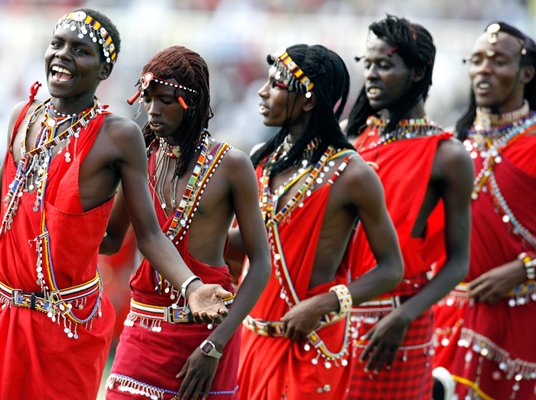Africa is a continent deeply rooted in traditions, where fashion is not only an expression of style but a symbol of identity, status, and significant life stages. From birth to adulthood, marriage, and death, African fashion plays a profound role in denoting life’s transitions, reflecting the deep cultural connections between clothing, customs, and community values. Each stage of life is represented through unique attire, fabrics, colors, and embellishments that speak to heritage, spirituality, and social structure.

Birth and Childhood: Colors of Celebration
In many African cultures, the arrival of a newborn is celebrated with specific fabrics and colors that reflect the joy of new life. For example, in some West African traditions, mothers and newborns are wrapped in white or bright-colored cloths, symbolizing purity, blessing, and hope for the future. In Yoruba culture, babies are often adorned with simple yet meaningful cloth during naming ceremonies. This attire often includes adire, a traditional Yoruba fabric with indigo-dyed patterns that carry spiritual and protective meanings.
As children grow, their clothing reflects their place within the family and community. In East Africa, for example, Maasai children wear simpler versions of the shúkà (the traditional Maasai cloth) until they reach adolescence, where changes in attire reflect their entrance into new social roles.

Adolescence and Rites of Passage: A Mark of Transition
Across many African societies, adolescence is a critical life stage, often marked by elaborate rites of passage. These ceremonies symbolize the transition from childhood to adulthood, with fashion playing a key role. Among the Zulu of Southern Africa, young men undergoing initiation wear specific garments, including beadwork that denotes their social standing and readiness for adulthood.
In Kenya, the Maasai warriors, known as Morans, dress in red cloth and intricate beadwork during their initiation. The red is symbolic of strength, bravery, and the blood of the community’s cattle, which are central to Maasai life. Their adornments, which include beaded jewelry and headdresses, represent their transition from youth to adulthood and their readiness to defend their community.
For girls, clothing and adornment are equally significant. In some Nigerian cultures, the Omu ceremony, a rite of passage for young girls, involves wearing intricate braided hairstyles and beaded attire, signifying their readiness for marriage and womanhood.

Marriage: A Fusion of Tradition and Celebration
Marriage in Africa is a time of immense celebration, and fashion is used to reflect the joy and cultural significance of the union. Brides and grooms don attire that reflects both their ethnic heritage and their family’s social status. In Nigeria, for instance, the traditional wedding attire for a bride can include the richly embroidered Aso Oke fabric, often paired with extravagant headpieces, while the groom may wear Agbada, a flowing gown, symbolizing leadership and prosperity.
In Southern Africa, particularly in Zulu weddings, brides wear beaded clothing in specific colors that represent love, fertility, and prosperity. The beading and ornamentation also speak to the wealth and prominence of the families involved. The attire worn during weddings is often passed down through generations, embodying the continuation of tradition.
In North Africa, particularly among the Berber and Tuareg people, wedding attire is known for its intricate craftsmanship. The use of silver jewelry, adorned with precious stones, is common, with each piece symbolizing protection, beauty, and fertility. The bride’s clothing is often a reflection of her family’s craftsmanship, and in some cultures, the groom’s family provides elaborate garments as a symbol of their wealth and readiness to welcome the bride into their home.

Aging and Wisdom: Attire of the Elders
In African cultures, growing older is often seen as a time to embrace one’s role as a community elder, and the fashion choices of the elderly reflect their respected status. In Ghana, the elderly often wear Kente cloth, a prestigious fabric made of silk and cotton that features elaborate, colorful patterns. The patterns on the Kente symbolize wisdom, leadership, and the accumulated experience of the wearer. Each design tells a story, often reflecting proverbs or historical events that connect the individual to their lineage and culture.
In many East African cultures, older women wear more modest, flowing garments, like the kanga in Swahili-speaking regions. These garments often have Swahili proverbs inscribed on them, serving as a reflection of their wisdom and guiding the younger generations.

Death and Mourning: Symbols of Reflection and Honor
Fashion also plays a significant role in death and mourning across Africa. Funerals are often elaborate affairs, with clothing serving as a visual marker of grief, honor, and the transition to the afterlife. In parts of Ghana, particularly among the Ashanti people, mourners wear black-and-red Kente cloth during funerals. The black signifies mourning, while the red is a color of heightened emotion, symbolizing the gravity of loss and the hope for the deceased’s safe passage to the ancestors.
In other parts of Africa, such as among the Xhosa of South Africa, widows wear specific clothing, including dark-colored isikhakha, which they wear for a set period of mourning. Once the mourning period ends, they may transition to lighter colors, symbolizing their gradual reintegration into society and their healing process.

In Northern Africa, particularly among the Tuareg people, blue indigo garments are often worn by mourners. The blue dye, which stains the skin, is believed to connect the living with the spirits of the dead, creating a visual link between the physical and spiritual worlds.




